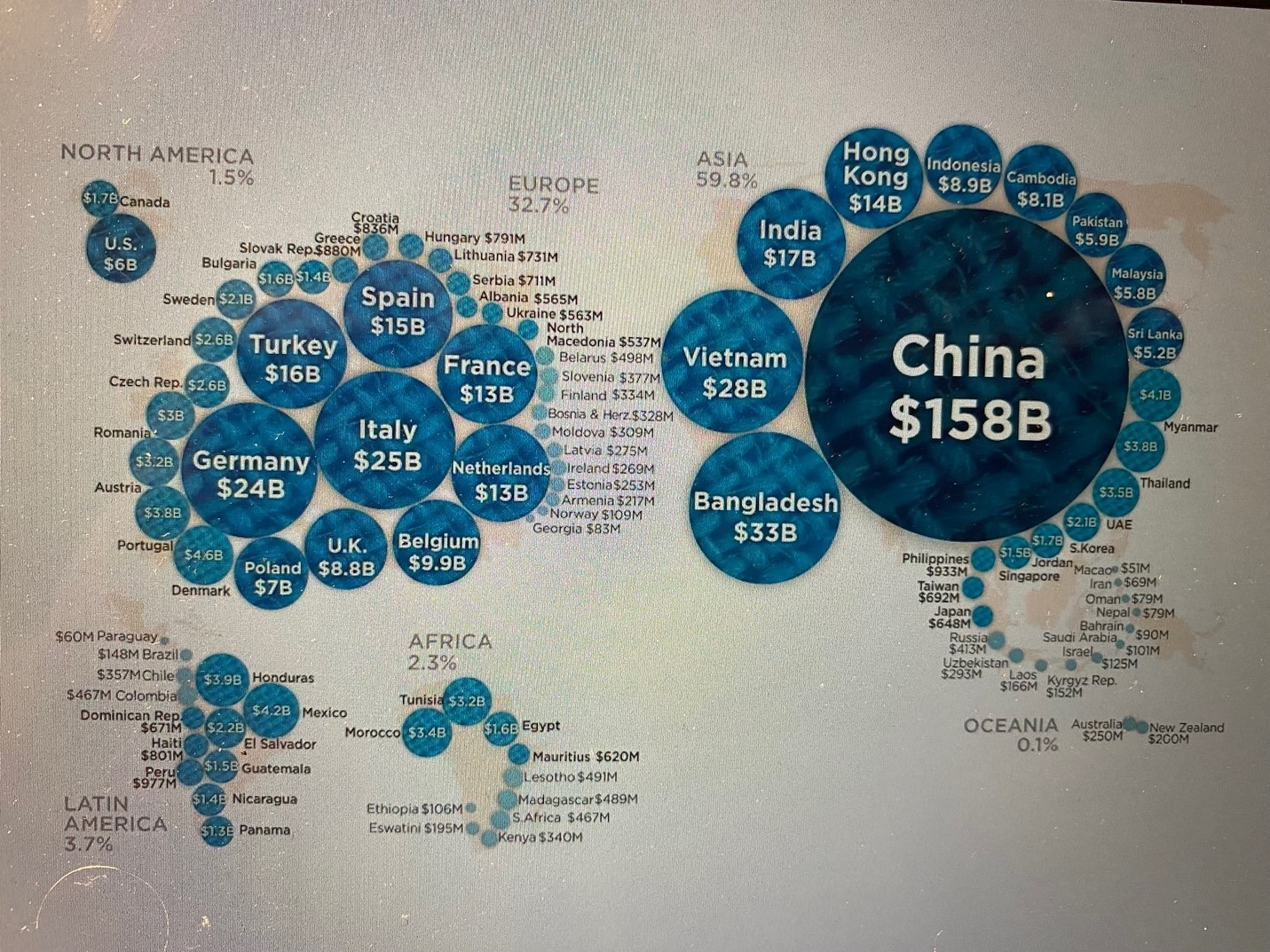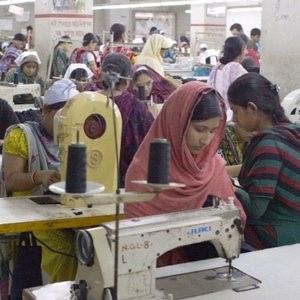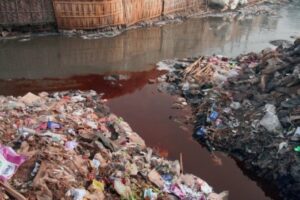
Dr. Marlea Clarke, Ph.D. Associate Professor of Political Science at the University of Victoria
The Dirty Side of the Clothing Industry: Is Fast Fashion Sustainable?
Our March 4th presenter, Dr. Marlea Clarke, from the University of Victoria, answers with a resounding “no, fast fashion is not sustainable.”
Dr. Clarke’s extensive research background was evident in her candid review of the complex issues related to the garment industry. Today, most manufacturing for the clothing industry occurs in the “Global South,” which refers to the emerging economies of Asia and Africa. Eighty percent of workers are women and China is by far the biggest clothing manufacturer.

Next time you are shopping, check the label to see where the garment was made. China is the largest manufacturer (by an enormous margin), followed by Bangladesh, Vietnam, India and Hong Kong.
Throughout history, working conditions have been poor. Current problems include conditions that are close to slave-labour. The work is poorly paid and includes horrible working conditions – crowded, poorly ventilated, dangerous environments. Hours are long, there are no breaks, and certainly there are no benefits or sick leave.

“The True Cost,” Movie
As egregious as the working conditions are, so too are the environmental impacts. For example, cotton is a very thirsty crop and not only does growing cotton consume large amounts of water, rinsing the chemical and dye from cloth consumes even more. Waste water, filled with chemicals, contaminates ground water and rivers; microfibers from synthetic fabrics contribute to (micro) plastic pollution; and after the garments are eventually discarded, there are so many of them, disposal is an issue.
Given the problems associated with “fast fashion,” are there solutions to enable fashion to be sustainable? Dr. Clarke is hopeful the industry can change, especially if consumers press for an ethical supply chain. Trade regulations were in place in the past (until 2005) to protect the North American and European textile industries. Knowing trade-protection controls previously existed means new types of controls to protect the environment and to protect worker’s rights can be introduced today. Currently “Export Profit Zones,” where products such as garments are manufactured, have no regulations. Even minor regulatory controls and standards would make a difference; establishing a minimum wage standard, let alone a living wage, would be a big step. Bringing in environmental standards for waste water would improve health and living conditions. Also, of considerable influence, consumer preference for products labelled as fair trade, organic, or sustainably grown could pressure fashion retailers to demand a change to manufacturing practices. Although “fast fashion” is not sustainable as it currently stands, it could become sustainable if changes are made.

Dye entering a river (“River Blue”)
Recommended films about the “fast fashion” industry:
- Clarke recommended a documentary titled, “River Blue” which explores the effect of the fashion industry’s pollution on rivers.
- Robert Grose recommended a film titled, “Greed,” which is a comedy about a billionaire retail mogul who’s made his fortune in the fashion industry by cheating and exploiting others.


